Matsutake mushrooms are considered a seasonal ingredient in Japan. This type of mushroom is commonly used in typical meals that include soups, shellfish, and rice. Matsutake mushrooms are said to be a mainstay of autumn Japanese cuisine. Matsutake is the king of mushrooms.
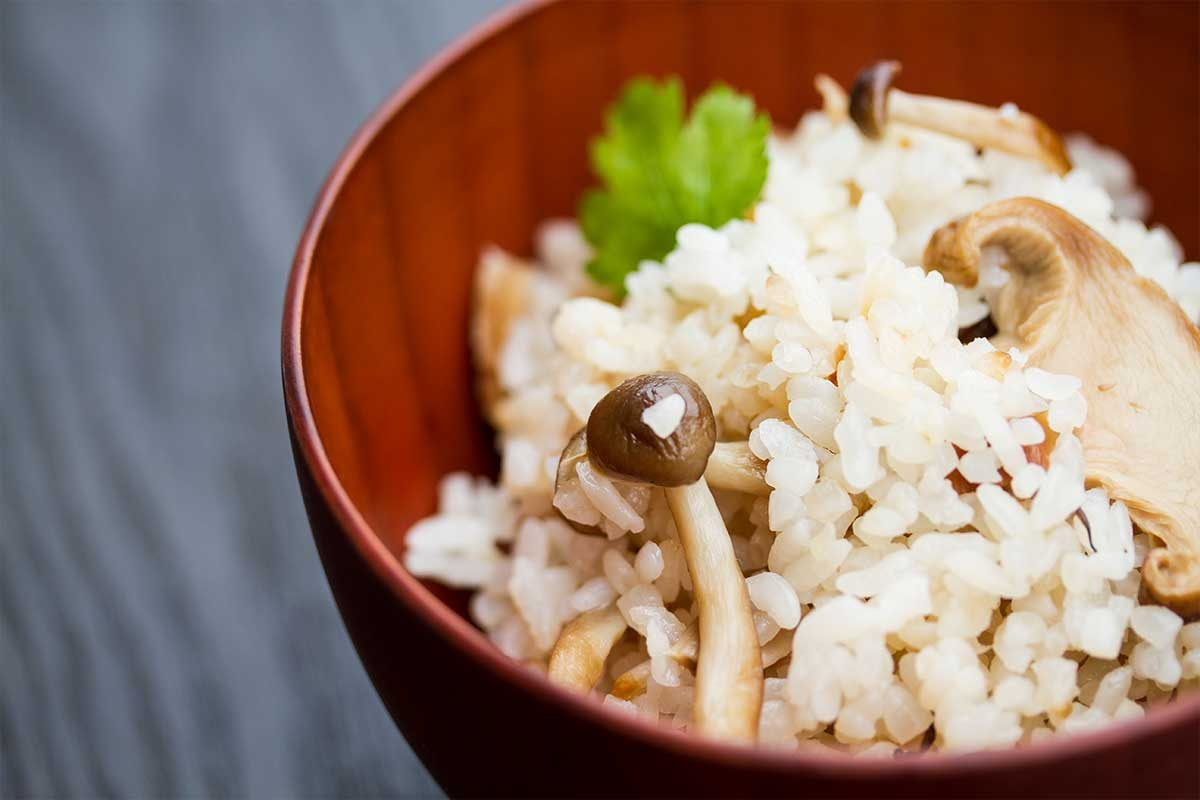
Photo: Marx Foods
Matsutake mushrooms can only be obtained naturally since they grow on the roots of living pine trees, as opposed to other mushrooms that grow on decaying wood. As a result, chefs and culinary connoisseurs have long cherished these.
Matsutake mushrooms are becoming increasingly scarce due to a lack of supply and a falling yield year after year. To satisfy their customers, many Japanese restaurants and agricultural businesses have decided to import additional Matsutake mushrooms from foreign countries. Matsutake mushrooms are not yet processed because the cost of importing them from other countries to Japan is quite low.
The Matsutake mushroom is both nutritionally and economically valuable. Matsutake mushrooms contain considerable levels of the vitamins B1, B2, C, and PP, in addition to the eight essential amino acids. Furthermore, when it comes to pharmacology, this beautiful mushroom offers several health benefits such as nourishing the body, being good for the bowels, alleviating pain, aiding diabetic therapy, and preventing cancer.
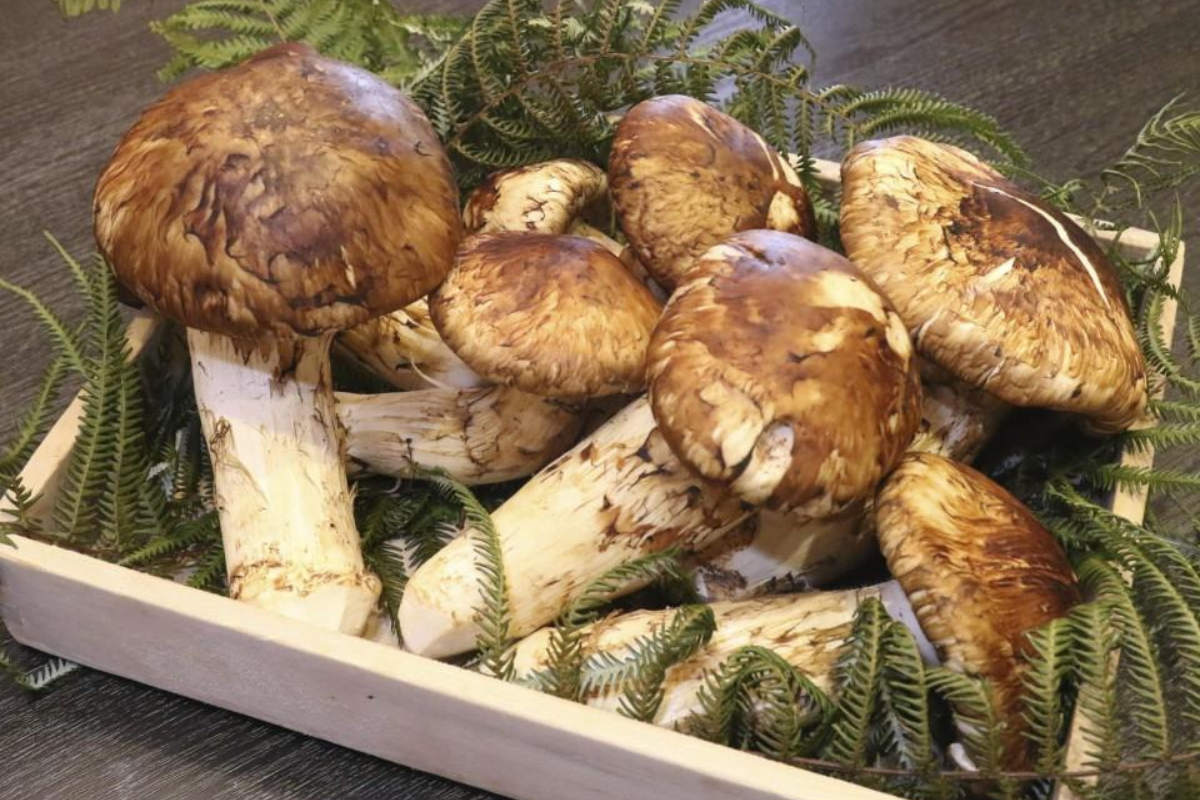
Many people say that the flavor of this fungus is true to the concept of “eternal autumn” because of its distinct fragrance. Matsutake Mushrooms encapsulate all of the flavors of autumn in Japan, with a gentle sensation of wind and snow, a hint of pine, and a touch of natural sweetness.
Matsutake mushrooms are the embodiment of this seasonality, with a primary season that only lasts a few weeks in autumn. When cooked, they have a springy, almost crunchy texture and a fresh, earthy aroma reminiscent of cedar.
Great combinations with Matsutake mushrooms
Matsutake is an expensive fungus known as the “king of mushrooms” in Japanese cuisine. Because this mushroom can only be picked in the fall, it was commonly utilized in many traditional Japanese dishes during that time period.
Matsutake mushrooms are typically cooked in Japan in the simplest way possible. Anyone who wants to have a spectacular autumn in “the land of cherry blossom” could simply grill fresh mushrooms over coals, invite friends, and then enjoy themselves beneath the cherry tree. Hand-fermented soy sauce and thick-bodied Matsutake mushrooms coupled with fresh fish are also sure to please.
Japanese mushroom soup: A famous dish in the autumn in the land of cherry blossoms
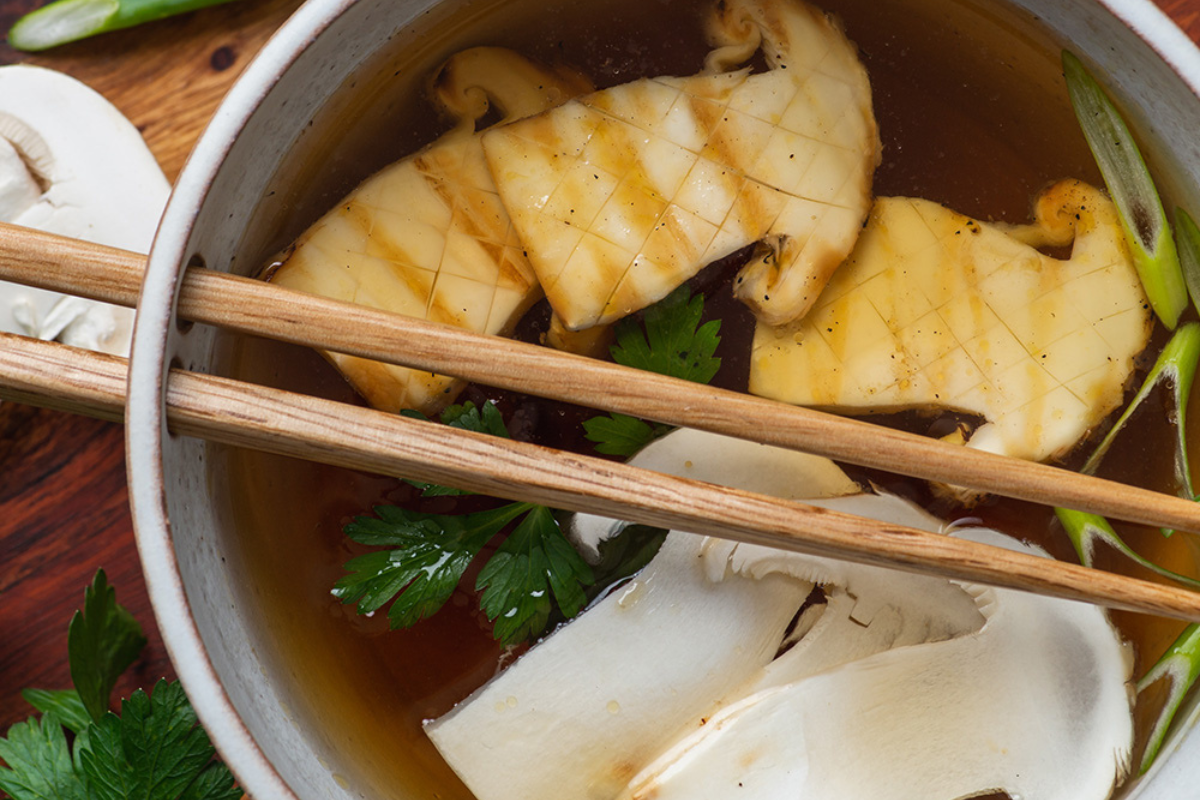
Photo: Fresh Wild
The soup is served in a clay teapot called as a dobin. Diners enjoy the great flavor of the meal and extra vegetables by pouring soup from the kettle into a little cup. Matsutake Dobin Mushi is normally made with tuna, seasonal vegetables, and either chicken or prawns, but the aromatic pine matsutake fungus is a significant ingredient that contributes to the dish’s uniqueness. The soup has a strong taste from the seafood blend, in addition to the sweetness of the matsutake mushrooms. To make the soup more appetizing, add a few drops of lemon or green sudachi fruit. This is one of the most enticing autumnal treats in Japan.
Charcoal-grilled Matsutake mushrooms
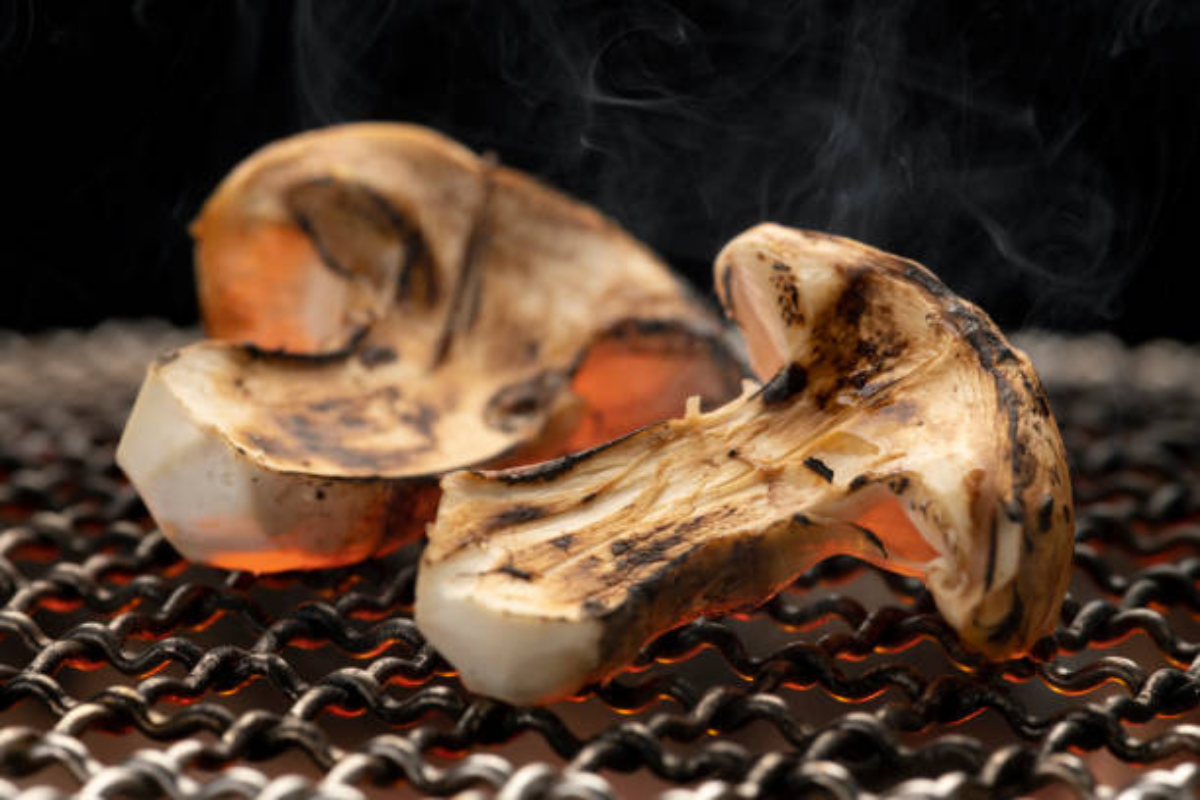
When mushrooms are roasted over charcoal, diners can better enjoy their particular flavor. Thin slices of mushrooms have been delicately toasted over charcoal. Mushrooms that have been scrubbed clean using a damp towel. People can enjoy the crisp, pure flavors of honey, turpentine, and odorous-soil odor.
Matsutake mushroom rolled salmon
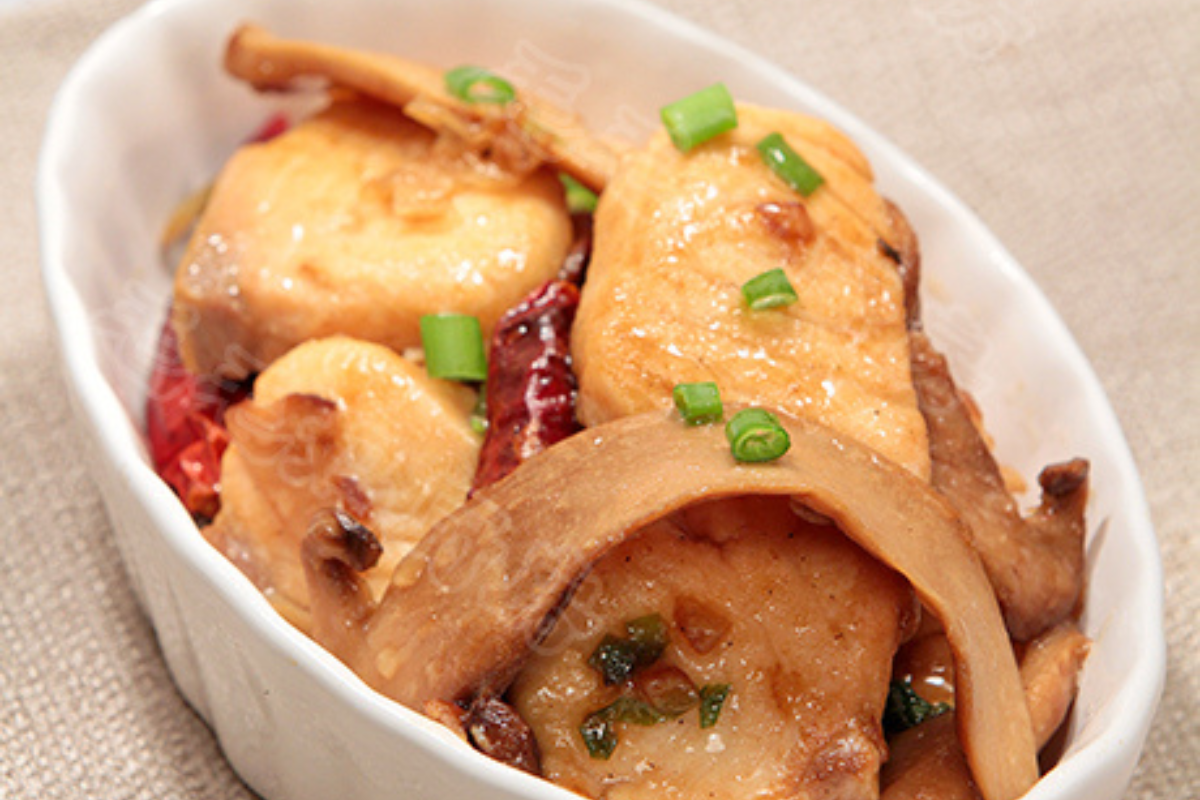
Photo: Maomao Mom Kitchen
Another option is salmon filet wrapped with matsutake mushrooms and cooked with sweet Teriyaki sauce, which will present visitors with new culinary experiences. The sweetness of the mushrooms paired with the scent of the salmon creates a memorable experience for diners.
Matsutake mushroom rice
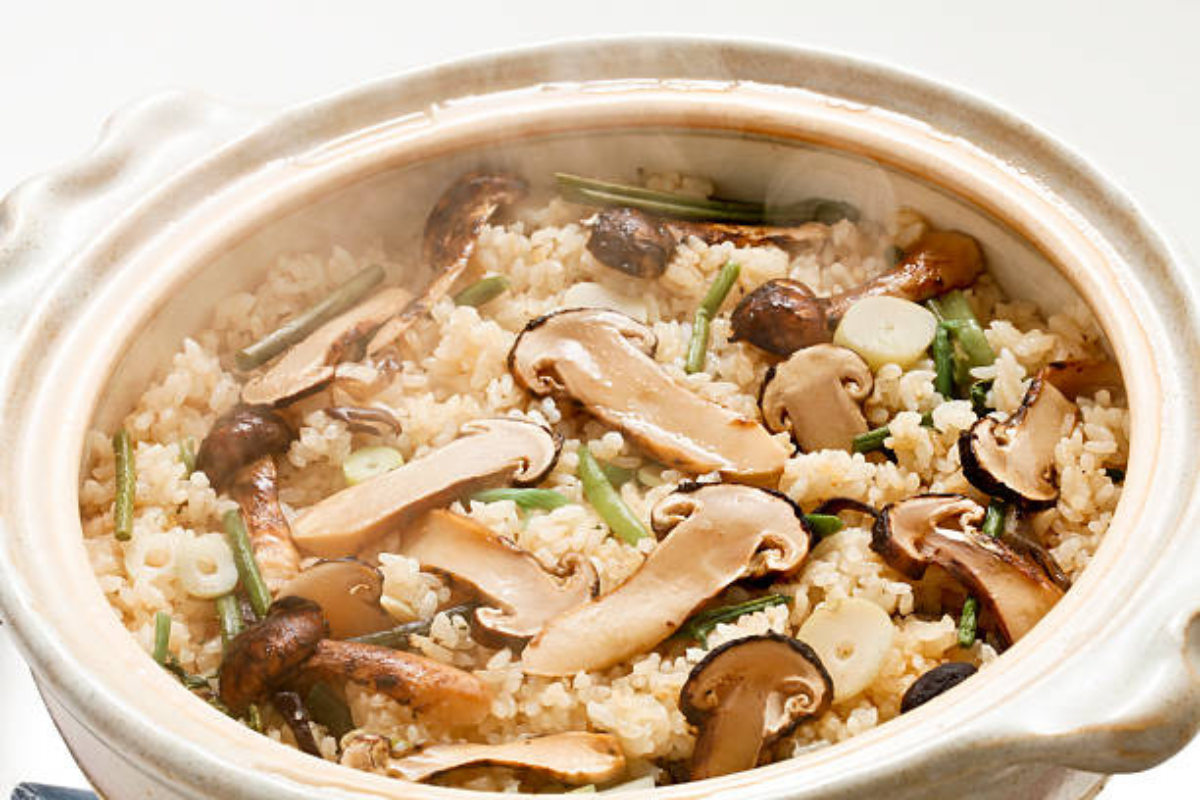
Matsutake Gohan is a savory Japanese rice dish made with matsutake mushrooms (also known as wild pine mushrooms) and served with dashi stock. The perfume of early season rice mixed with the sweetness of Matsutake mushrooms is an ideal and distinctive combination for family meals. The pine mushroom rice combines these two seasonal treats to create a fragrant rice dish that brilliantly captures the character of Japanese cuisine. The modest simplicity of the small bowl of rice conceals the depth of diverse flavors and the arrival of autumn.

